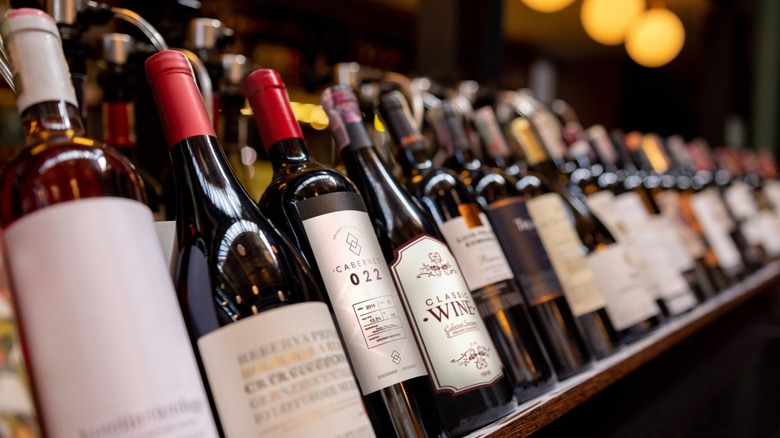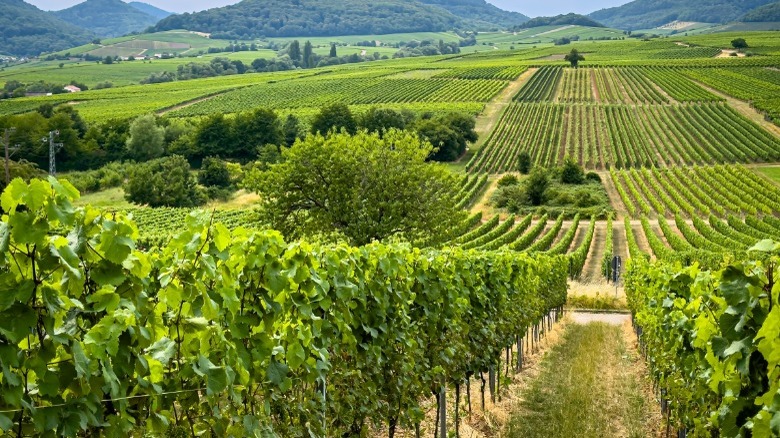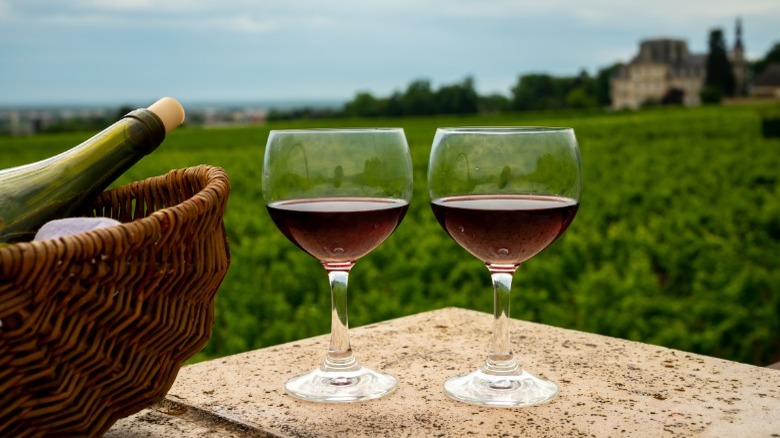Why Estate Wine Is So Expensive
If you've ever picked up a bottle of wine and noticed the word "estate" or "estate bottled" on it, you may have also recognized that it tends to come with a heftier price tag than some of the other bottles around it. But why?
Estate wine is wine made using grapes from a vineyard actually on the "estate" in question. The winery that appears on the bottle owns the vineyard from which the grapes came — and, as you might imagine, owning the winery, vineyard, and all the land these sit on costs a lot of money, as does the farming, cultivating, and additional labor that goes into creating the wine itself. This level of detail and control usually correlates with a higher price tag.
So, if you went into the store looking for a bottle to use in a red wine reduction, estate wine most likely won't fit the $10 limit you should set when spending on a cooking wine.
Estate vs estate bottled
So, what's the difference between "estate" and "estate bottled"? For starters, "estate bottled" is actually a legal term, whereas "estate" alone is not. Estate bottled wine is made from grapes that are grown, harvested, and turned into wine on-site. For a wine to be labeled as estate bottled, the grapes must have been grown in the same viticultural area (AVA). These AVAs are unique regions characterized by their individual climates and geographic traits, setting them apart from neighboring territories. By observing an AVA designation on your wine bottle, you can pinpoint the specific origin of the wine with greater accuracy. On the other hand, "estate" wine is not legally regulated in the United States and more broadly means that the winery had control over all the farming.
The difference between the two terms becomes even more convoluted when you travel to another part of the world, where the same terminology is used but has different meanings. In South Africa, the term "estate" means what we'd consider to be the legally-regulated "estate bottled" in the U.S. There could also be different terms used altogether in other regions, like in Burgundy, where wineries may use differing labels based on whether they farmed the grapes themselves or bought them.
A wine's lore contributes to its price point
So, how expensive is "expensive," really? It depends. Some estate wines cost less than $30, while others, such as many Harlan Estate wines, typically sell for anywhere between a few hundred to a few thousand dollars. If that sounds like a steep price, consider the most expensive bottle of wine ever sold: a 1945 Romanée-Conti, which fetched $558,000 at an auction in Switzerland.
What drives up estate wine prices from pricey to utterly exorbitant? Sometimes the appeal of an estate wine — beyond the cost it takes to produce and the control — comes down to the lore surrounding it. The 1945 Romanée-Conti bottle, for example, is one of only 600 that were made at the Romanée-Conti vineyard that year; another bottle sold at the same auction for over $400,000. This vineyard is one of the most famous in the world of wine, and has been owned by monks and even the Prince of Conti, a member of the French House of Bourbon. Along with its storied ownership history, only "grand cru" vineyards are used to make Romanée-Conti wine — which is the highest quality of vineyard one can achieve in Burgundy. So, for wines that hail from storied vineyards, or come with interesting lore regarding family and history, you can expect to pay even more — sometimes in the range of hundreds of thousands of dollars, to be exact.



